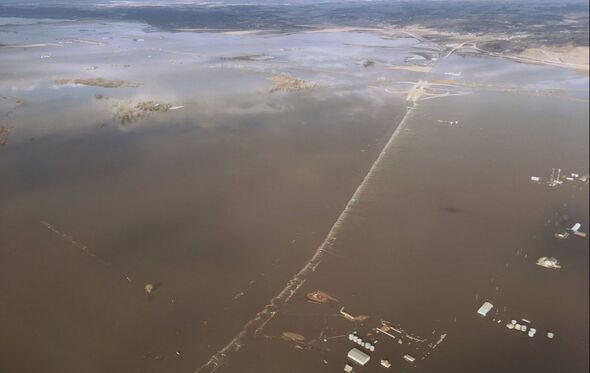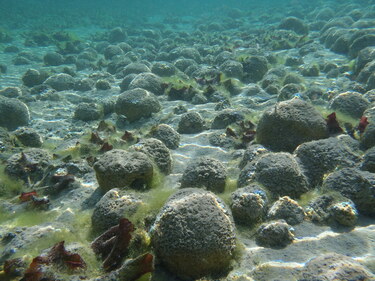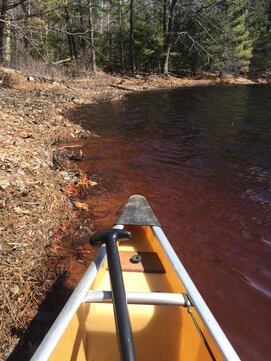Current projects
Studies of eutrophication, mostly in tropical lakes
Lakes in tropical regions provide drinking water, fisheries, and other ecosystem services, but when unsustainable resource extraction, changing land use, pollution, and/or climate change impact these lakes, the subsistence communities in the region are often disproportionately affected. Corman has been involved with several projects that combine fundamental studies of tropical lake ecology with efforts to improve lake management via capacity building, transdisciplinary partnerships, and outreach. You can read about the research findings from Lake Tanganyika, Tanzania (Corman et al. 2010), and from Lake Atitlán, Guatemala (Corman et al. 2015). Recently, Corman received funding from the UW Global Health Initiative to begin a transdisciplinary project with lab alum Amber Roegner on “Water, Women, and Fisheries: Addressing Two Ecological Realities Impacting Human Health at Lake Victoria.” More updates are coming soon!
Lakes, rivers, and streams in human-dominated landscapes, mostly in Nebraska
Nebraska is a richly agrarian landscape with 97% of the land privately owned. It is also a water-rich state, with numerous streams and rivers cutting through this landscape. While much of the focus of water in Nebraska has been on its use in irrigation, members of the Ecosystem Stoichiometry lab have brought a new perspective to the conversation: does water quantity matter if water quality is not achieved? Ongoing projects in this area include how streams across a land-use gradient respond to flood events, whether rivers act as pipes or processors of nutrients, and even how we define water quality. More information about this work can be found hereaslopubs.onlinelibrary.wiley.com/doi/abs/10.4319/lo.2010.55.1.0214.
Lakes in tropical regions provide drinking water, fisheries, and other ecosystem services, but when unsustainable resource extraction, changing land use, pollution, and/or climate change impact these lakes, the subsistence communities in the region are often disproportionately affected. Corman has been involved with several projects that combine fundamental studies of tropical lake ecology with efforts to improve lake management via capacity building, transdisciplinary partnerships, and outreach. You can read about the research findings from Lake Tanganyika, Tanzania (Corman et al. 2010), and from Lake Atitlán, Guatemala (Corman et al. 2015). Recently, Corman received funding from the UW Global Health Initiative to begin a transdisciplinary project with lab alum Amber Roegner on “Water, Women, and Fisheries: Addressing Two Ecological Realities Impacting Human Health at Lake Victoria.” More updates are coming soon!
Lakes, rivers, and streams in human-dominated landscapes, mostly in Nebraska
Nebraska is a richly agrarian landscape with 97% of the land privately owned. It is also a water-rich state, with numerous streams and rivers cutting through this landscape. While much of the focus of water in Nebraska has been on its use in irrigation, members of the Ecosystem Stoichiometry lab have brought a new perspective to the conversation: does water quantity matter if water quality is not achieved? Ongoing projects in this area include how streams across a land-use gradient respond to flood events, whether rivers act as pipes or processors of nutrients, and even how we define water quality. More information about this work can be found hereaslopubs.onlinelibrary.wiley.com/doi/abs/10.4319/lo.2010.55.1.0214.
|
Growing rocks: The effects of calcium carbonate deposition on phosphorus cycling in aquatic ecosystems
Phosphorus is an essential nutrient for all life, but its scarce availability in many environments often limits plant and microbial growth. One of the processes that can influence phosphorus availability in aquatic systems is co-precipitation of phosphate with deposition of calcium carbonate (CaCO3). Work by Corman and co-authors shows how CaCO3 deposition impacts nutrients cycling in streams (Corman et al. 2015, Corman et al 2016) and in microbialite communities (Corman et al. 2016). Co-precipitation of phosphate with CaCO3 is also important in lakes and may recently have emerged in importance to Lake Mendota, one of the world's most longest-studied aquatic ecosystems (Walsh et al. 2019). Press coverage about Corman's dissertation work on the microbialites of Cuatro Cienegas is found in a 2009 Zócalo Saltillo news piece. |
Past projects
|
Environmental change and Wisconsin seepage lake chemistry
Concentrations of dissolved organic carbon (DOC) have increased in many lakes in North America and Europe. Increased DOC or lake “brownification” is thought to be due to decreased deposition-related changes in soil pH or ionic strength (from acid rain recover), climate change, or complex interactions between these drivers. Seepage lakes, which have no stream inlets or outlets and are fed predominately by rain, are both uniquely susceptible to environmental stressors like air pollution and climate change and make great models for teasing about impacts of different environmental drivers. This project, which was a collaboration between UW-Madison (Emily Stanley), the US Forest Service (Randy Kolka and Steve Sebestyen), and the University of Winnipeg (Nora Casson), documented historical and current lake conditions and used experiments to determine how decreasing levels of acid rain and climate change may influence lakes in the Chequamegon-Nicolet National Forest. In the first publication, we show how increases in DOC fluxes to seepage lakes are likely increasing fluxes of nitrogen and phosphorus (Corman et al. 2018; EOS coverage). In the next, we found evidence that climate change, vis a vis changes in temperature and soil moisture, will likely change the chemical composition of the soil leachates associated with browning (Bertolet et al. 2018). |
Life in Extreme Environments
When is a limnologist an astrobiologist? Well, when one is studying biogeochemistry of extreme or novel (aquatic) environments. As a graduate student, Corman was a part of the NASA Astrobiology Institute at Arizona State University. The collaborative team of geologists and biologists studied nutrient demands of microbes in hyper-oligotrophic environments (Cuatro Ciénegas, MX), hot springs (Yellowstone National Park, USA), and novel ecosystems (pumice floating in lakes in Patagonia, Argentina). Collaborators on these projects included Valeria Souza (Universidad Nacional Autonomous de México), Janet Siefert (Rice University), Amisha Poret-Peterson (USDA/University of California, Davis), Ariel Anbar, Everett Shock, and Hilairy Hartnett (Arizona State University), and Esteban Balseiro and Beatriz Modenutti (Universidad Nacional del Comahue, Argentina).
Check out some of the papers from this work (Modenutti et al. 2016, Elser et al. 2015, Lee et al. 2014) or some of the news coverage about pumice floating in lakes.
When is a limnologist an astrobiologist? Well, when one is studying biogeochemistry of extreme or novel (aquatic) environments. As a graduate student, Corman was a part of the NASA Astrobiology Institute at Arizona State University. The collaborative team of geologists and biologists studied nutrient demands of microbes in hyper-oligotrophic environments (Cuatro Ciénegas, MX), hot springs (Yellowstone National Park, USA), and novel ecosystems (pumice floating in lakes in Patagonia, Argentina). Collaborators on these projects included Valeria Souza (Universidad Nacional Autonomous de México), Janet Siefert (Rice University), Amisha Poret-Peterson (USDA/University of California, Davis), Ariel Anbar, Everett Shock, and Hilairy Hartnett (Arizona State University), and Esteban Balseiro and Beatriz Modenutti (Universidad Nacional del Comahue, Argentina).
Check out some of the papers from this work (Modenutti et al. 2016, Elser et al. 2015, Lee et al. 2014) or some of the news coverage about pumice floating in lakes.
Sustainable Phosphorus Initiative
Human activities have profoundly altered the global biogeochemical cycle of phosphorus to increase food production with detrimental environmental effects. As a graduate student, Corman explored possibilities for a sustainable societal approach to phosphorus, leading a transdisciplinary conference, the 2011 Sustainable Phosphorus Summit, co-authoring and co-editing an article (Childers et al. 2011) and book (Phosphorus, Food, and Our Future), serving on the United Nations Environment Programme Year Book workshop (2011; published book is available here), and initiating the Sustainable Phosphorus Initiative.
Human activities have profoundly altered the global biogeochemical cycle of phosphorus to increase food production with detrimental environmental effects. As a graduate student, Corman explored possibilities for a sustainable societal approach to phosphorus, leading a transdisciplinary conference, the 2011 Sustainable Phosphorus Summit, co-authoring and co-editing an article (Childers et al. 2011) and book (Phosphorus, Food, and Our Future), serving on the United Nations Environment Programme Year Book workshop (2011; published book is available here), and initiating the Sustainable Phosphorus Initiative.




